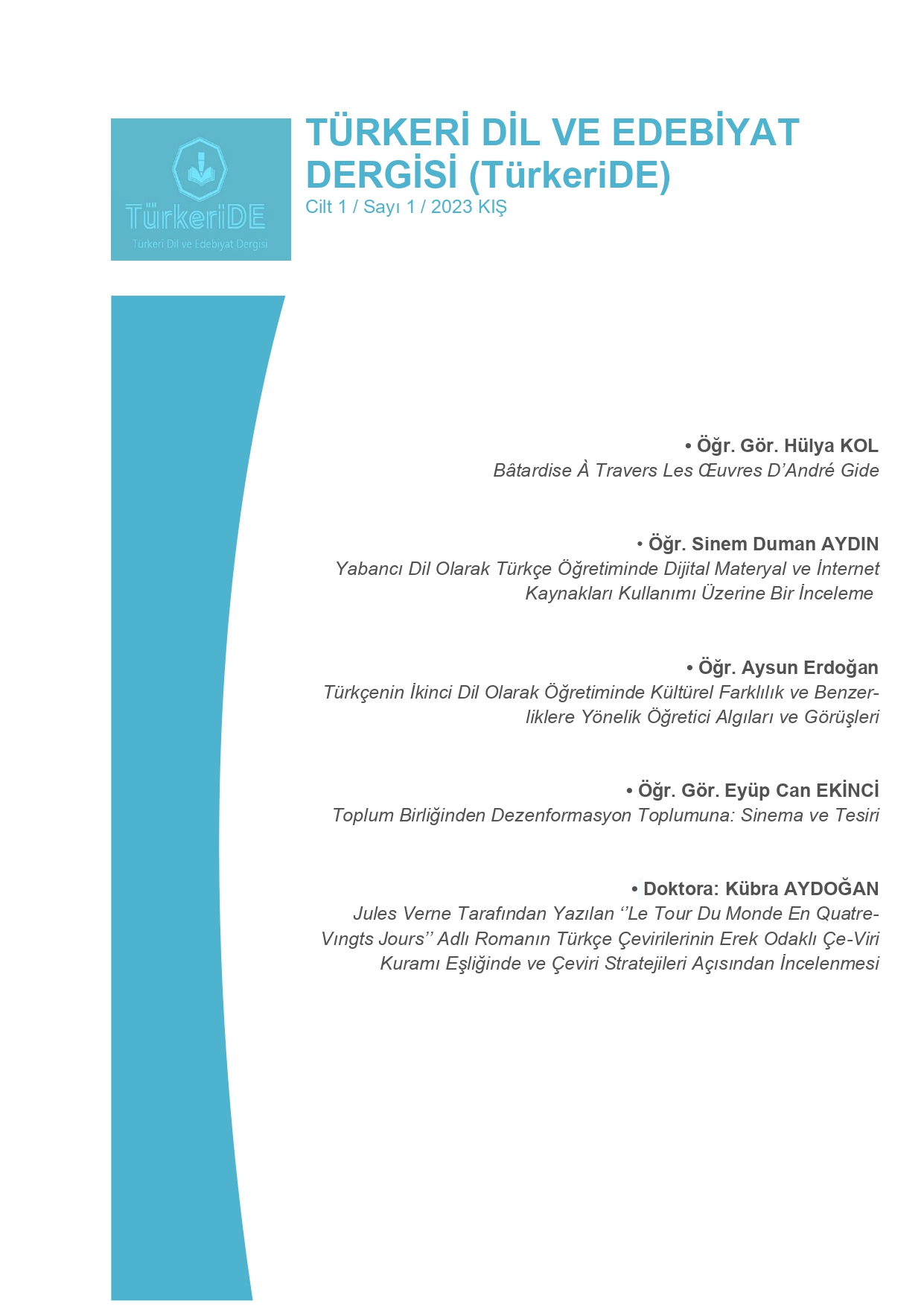TOPLUM BİRLİĞİNDEN DEZENFORMASYON TOPLUMUNA: SİNEMA VE TESİRİ
Keywords:
cinema, literature, folklore, fakelore, civilizationAbstract
Societies develop grand form on their founding norms. Constitutive norms create essential identity, thus unity-integrity is ensured. Literature and art are major forms of substantive identity established on the ground of founding norms. Thanks to the form established on the original ground, the artist leaves traces of himself. Works of art and literature are the traces left by the artist on his original ground. It is not possible to explain this situation with the subject-object relationship. Because what the artist does here is not to shape the objects in the outside world through dexterity, but to leave a trace of himself. The trace left by the substance, which overflows from its original identity, forms the artist's work. In this context, the work of art is the traces overflowing from our original identity. Works that do not carry the original identity cannot be considered as works of art. For such works, it can be said that only the things found in nature are processed on a mechanical plane by means of information. If the works do not have the quality of works of art, it is because they are disconnected from their essence. It is necessary to consider the structures produced independently of their original identity outside of the natural. The unity of society can also be possible thanks to the forms attached to its own ground. The reason why the society is deformed can be explained by its breaking from its own ground. In this article, which includes the effect of cinema and literature on society, it is explained the above-mentioned issues in detail. It is also explained the works that broke away from their original identity and the literary narratives that were subjected to disinformation. It is discussed identity crisis brought by the Modern Age and focused on the ways societies can re-establish their original unity in the study.
References
BAZİN, Andre (2000). Sinema Nedir?, (Çev. İbrahim Şener), İzdüşüm Yayınları, İstanbul.
BERZAH, Meral Çakır (2006). Medyanın Ördüğü Berlin Duvarı, Nobel Akademik Yayıncılık, Ankara.
DELEUZE, Gilles (2014). Sinema I Hareket-İmge, Norgunk Yayınları, İstanbul.
DUNDES, Alan (2006). Fakelore Fabrikasyonu, (Çev. Aslı Uçar-Selcan Gürçayır), Millî Folklor, S. 70, Y. 18, s. 92-101.
ENGİNÜN, İnci (1990). Ahmet Mithat Efendi’nin Tiyatroları, Marmara Üniversitesi Yayınları, İstan-bul.
GARAUDY, Roger (2020). İnsanlığın Medeniyet Destanı, Timaş Yayınları, İstanbul.
KAPLAN, Yusuf (2006), Batılı Yorumcular ve İbn Haldun’un Medeniyet Kavramı, Geçmişten Gelece-ğe İbn Haldun Sempozyumu, 3-4 Haziran, İstanbul.
KAPLAN, Yusuf (2015). Sinema Ne/Resi, Film Nereye Düşer?, (Erişim Tarihi: 19.02.2021, https://www.youtube.com/watch?v=BKYMHgtBvNc&t=3211s).
KAPLAN, Yusuf (2020). “Dünyaya Film Dili Armağan Edecek Bir Sinemamız Olacak Mı?” Yeni Şafak, (Erişim Tarihi: 20. 02. 2021,
KISAKÜREK, N. Fazıl (2016). Tiyatro ve Tesiri, Büyük Doğu Yayınları, İstanbul.
SHAYEGAN, Daryush (1991). Geleneksel Toplumlarda Kültürel Şizofreni, Metis Yayınları, İstanbul.
TEMUR, Nezih (2010). “Folklor-İdeoloji Bağlamında Sovyetler Birliği Dönemi Folklor Politikaları ve Bu Politikaların Kırgız Folkloruna Etkileri”, Bilig, S. 53, Bahar, s. 219-232.
Downloads
Published
How to Cite
Issue
Section
License
Copyright (c) 2023 TÜRKERİ DERGİSİ

This work is licensed under a Creative Commons Attribution 4.0 International License.


